Medical students in the Carver College of Medicine have a unique perspective on the current pandemic. Participants in the Sub-Internship in Internal Medicine course last month were given the opportunity to reflect on their thoughts and feelings about COVID-19 and express them in whatever form they chose.
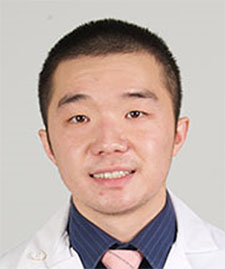 Weiren Liu took to Twitter to describe his creative reflection projects.
Weiren Liu took to Twitter to describe his creative reflection projects.
One assignment for my @IntMedatIowa SubI is a personal reflection on the med student experience in #MedEd during COVID. Dr. Gebska encouraged creativity. So this is my assignment in a twitter thread format: Upcycling, Troubleshooting and Other Random Quarantine Projects.
Virtual clerkships have limitations. But trying to accomplish small crafty projects in quarantine with limited resources and trying to make things work with only materials I had at home helped me better appreciate the ingenuity and the work clerkship directors put in to create virtual curriculums for medical students during COVID. Thank you to Dr. Gebska, Dr. Suneja, Kathleen and many others @IntMedatIowa for creating and providing @IowaMed students with the best IM clinical experience possible here @uihealthcare!
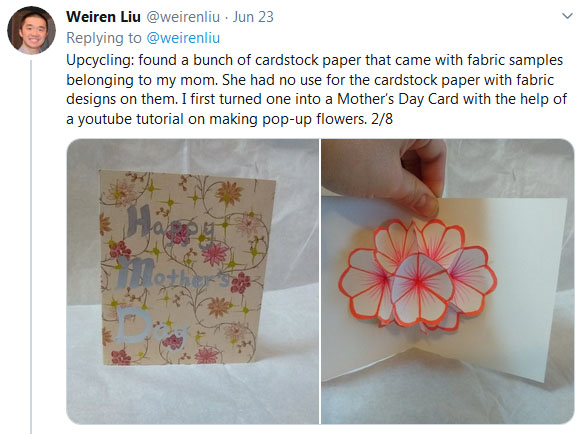
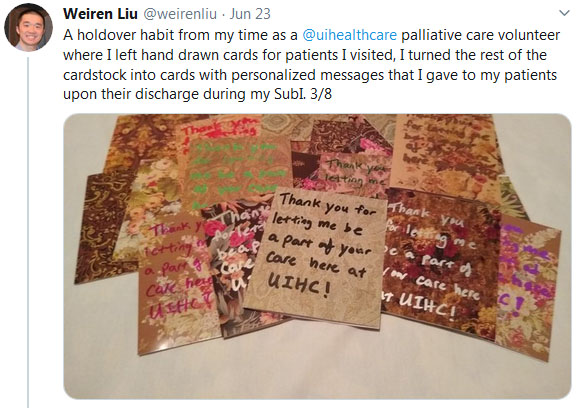
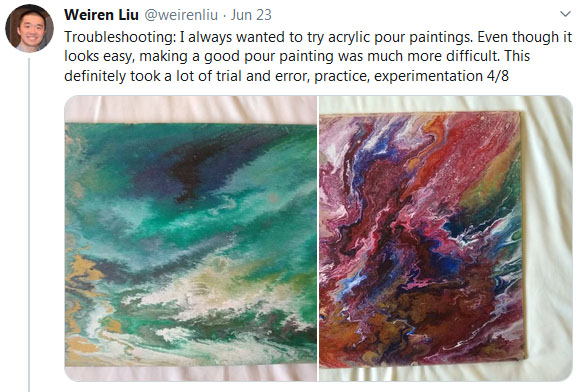
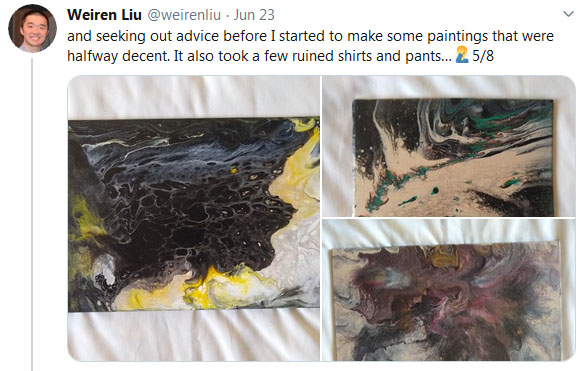
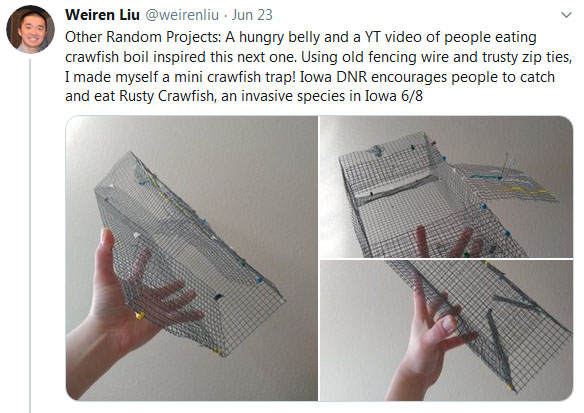
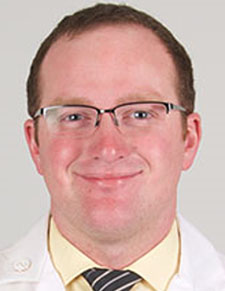 Ben Wilkinson plays a piano piece based on the song "Quarantine."
Ben Wilkinson plays a piano piece based on the song "Quarantine."
Reflection: For my reflection I chose to play a piece based on the song “Quarantine”. The original song was not about the current pandemic but captures the feelings of isolation we all feel. My version incorporates a building tension, reflecting the uneasiness we feel as we try to go about “business as usual”. Everyday tasks such as grocery shopping now carry a sense of danger, a constant anxiety. The tension in the song is slowly building in the same way, just beneath the surface.
As we care for our patients, we must remember the anxiety and tension that has been building in them as well. They bring a sense of isolation with them, which is intensified as visitors are limited and caregivers hide their faces with masks. Making a connection with our patients it now more important, and difficult, than ever before. Even though we may be in the same room with our patients, we are still quarantined away from them. We must continue to search for new ways to reach out, connect, communicate, and break the growing tension.
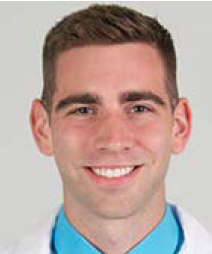 Nick Evans wrote up a progress note about himself.
Nick Evans wrote up a progress note about himself.
Progress Note: 7/25/20
Subjective
Patient is a 28-year-old man who presents today for follow-up. He was previously seen in clinic 3/19 and 5/1. Briefly, on 3/19 he described experiencing concern and general uncertainty as to the developing COVID pandemic. His medical school rotations were essentially canceled for the time being and learning became “virtual”. At that time there was a lot of confusion as to what would happen in terms of medical education and how/when students would be allowed to return to the hospital. On 5/1, he returned to clinic (via video visit) with symptoms of Zoom meeting burnout and social distancing fatigue. Despite these concerns, he was notably more optimistic regarding how the pandemic is affecting others. He noted that he had been making efforts to keep in touch with friends and family.
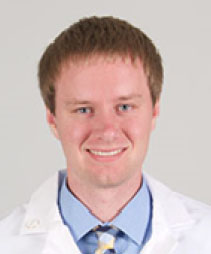 Brandon Johnson's poem describes his return to the hospital after months online.
Brandon Johnson's poem describes his return to the hospital after months online.
|
A Better Tomorrow I walk towards the hospital I wait my turn for screening I meet my fellow medical team I go to round with anxious nerves I leave the hospital so very late |
Reflection: This poem provides an overview of my first day back in the hospital after months of doing online coursework. Seeing how much had changed in the hospital and world in a relatively short period of time was anxiety provoking. Little things I took for granted now became much more apparent such as walking into the hospital, introducing myself to the rest of the team, and limiting visitors for our patients. While seemingly little, I think these can all add up to take a toll on a person’s morale. However, through all of this, I have hope that things will get better. Eventually, we will be back to the world we all know.
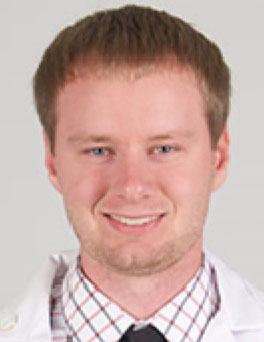 Nathaniel Johnson wrote a poem about an experience on a VA ward.
Nathaniel Johnson wrote a poem about an experience on a VA ward.
|
Inpatient Isolation The world is changing around me, this is what I know “I want to see my family”, they say as they lie in bed He’s getting sicker and sicker, he maybe has days to live The world is changing around me, this is what I know |
Reflection:
This poem was written about an experience I had while back on the wards with the internal medicine team at the VA hospital. Currently, there is a strict no visit policy for most patients. An exception to this rule is for terminally ill patients, where the hospital staff has been very accommodating to allow for visitors. However, only approved and a limited number of people can visit the patient at a single time. This makes it tough for patients who have large families to see all the loved ones they wish to see. Although it is tough to see patients struggle to see family members in their final days, I understand that visitor limitations are a necessity to keep everyone involved safe. Patients currently hospitalized during this period face more challenges than patients have ever before. Not only are they battling their own health conditions, but they are also fighting with social isolation and loneliness while hospitalized. As healthcare providers, I feel it is important we recognize this and make sure we are treating the
entire patient, and not just the disease that brought them there. Although the days can be busy as the list of things to do gets longer and longer, taking that extra time to check in and converse with patients about their life and interests can go a long way. Sometimes all we need is a friend.
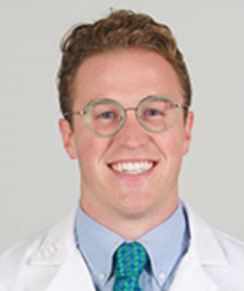 Marcus Munoz's reflection makes the case for wearing a mask.
Marcus Munoz's reflection makes the case for wearing a mask.
Please, Wear a Mask
We were nearing the end of our shift on the hematology oncology in patient unit and got the notification that we were receiving a transfer. The patient was a 60-year-old woman who had recently been diagnosed with Ewing sarcoma and they were found to have widely metastatic disease as well as bilateral pulmonary emboli. Although hemodynamically stable, the senior resident calling to transfer the patient seemed a bit rattled. He knew this person was sick and emphasized that our team should have a low threshold to transfer them to the MICU.
When she got to our floor she was accompanied by her husband. Something I greatly appreciated about my time on the hematology oncology floor before COVID times was getting to know the patient and their family. I learned getting to know a person deeply is crucial when trying to make complex medical decisions in the context of a cancer diagnosis. My senior resident and I introduced ourselves to the patient. Despite requiring eight liters of oxygen per minute, the patient was smiling and had a calming presence.
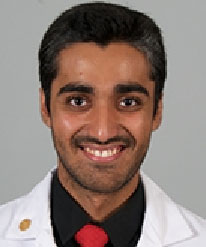 Irtaza Khalid created an educationa video about flattening the curve.
Irtaza Khalid created an educationa video about flattening the curve.
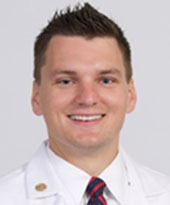 Daniel Metasic wrote about ‘The Road Less Traveled’ in the COVID-19 Pandemic.
Daniel Metasic wrote about ‘The Road Less Traveled’ in the COVID-19 Pandemic.
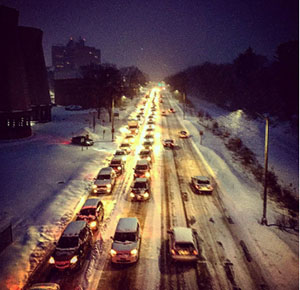
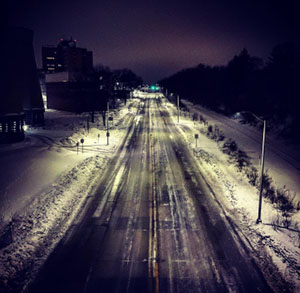
Every day I walk across this bridge that brings me to the University of Iowa Hospital and Clinics and medical school campus. I have trekked over this concrete over a thousand times in all sorts of conditions, day and night during my training. These pictures captured on my iPhone a year prior to the pandemic resonated with the feelings of 2020. The left side illustrates a bustling city street – people are in their cars coming and going. In stark contrast, the right picture shows an empty frozen street without a car to be seen. The early months of quarantine were desolate as society quarantined to ‘flatten the curve’ and slow the rising cases of COVID-19. During the early months of the pandemic, it seemed that life just came to a stop – nobody had anywhere to be – except healthcare workers. As I make the journey to the hospital every day, I take a look from this viewpoint and think about how times have changed. It was inspiring and humbling to see the role of physicians, scientists, and public health officials navigate the uncertainty of the situation but also take appropriate measures to ensure a healthy society. This pandemic has provided me with more motivation to continue to learn and strive to be the best physician that I can be so that one day I am prepared to help when called upon. This pandemic only strengthened my role in this world to serve others. - U.S. Route 6 in Iowa City, Iowa. (August 21, 2020).